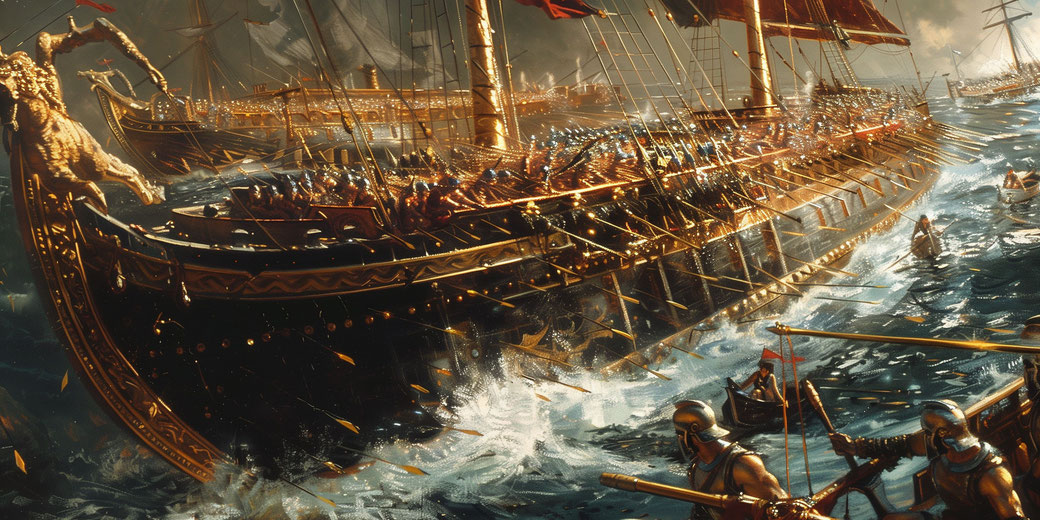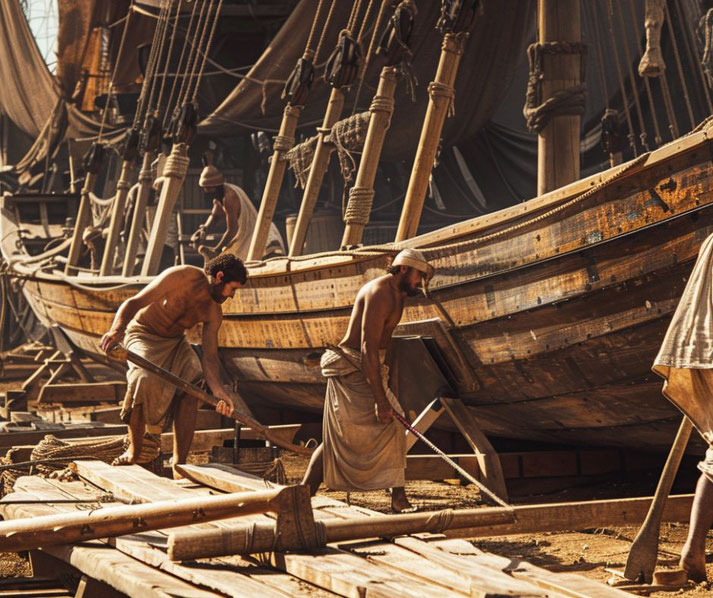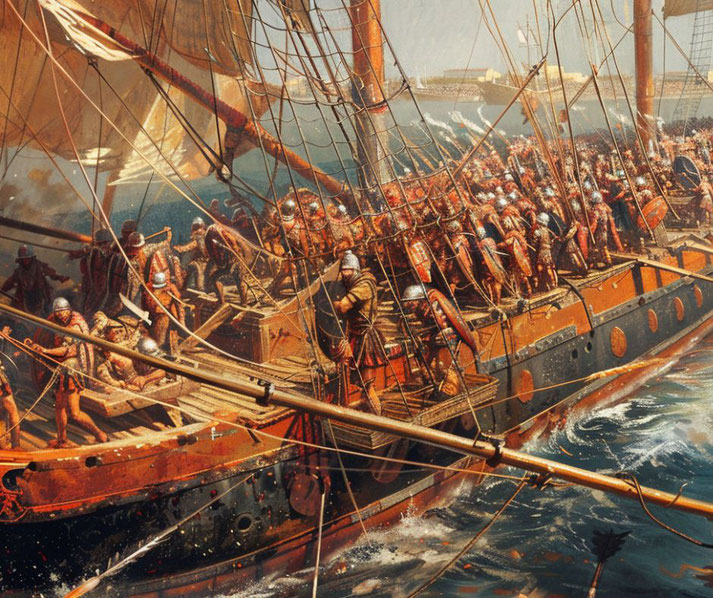Why the trireme was the naval superweapon of ancient Greece

The trireme was a formidable warship powered by rows of oarsmen, and it played a pivotal role in ancient Greek naval history.
These sleek, fast vessels were the backbone of ancient Mediterranean fleets, dominating sea battles due to their speed and agility.
In the hands of a skilled crew and commander, they could strike with terrifying precision and power, changing the course of an entire war in an instant.
Why the design of a trireme was so revolutionary
Triremes were primarily designed for speed and agility. As a result, they were built with a particularly slender hull, typically about 120 feet long, made from wood, often oak or pine, chosen for its strength and lightweight properties.
With a beam of around 18 feet, the ship maintained a sleek profile, essential for cutting through the water at high speeds.
The construction of a trireme required skilled shipbuilders to use a technique called mortise and tenon to join planks: a method that provided both flexibility and strength to the hull.
This design allowed the trireme to withstand the immense stresses upon the structure caused by rowing and combat.
Finally, the ship's shallow draft allowed it to navigate close to shore and execute quick maneuvers during battle.
This was a crucial element to its strategic flexibility.
Triremes also had a role outside of combat. They were often used for blockades, raids, and reconnaissance missions.
Their speed and agility made them ideal for intercepting enemy supply ships and for surprise attacks on coastal settlements.

Who made up the crew of a trireme?
One of the most distinctive features of the trireme was its three tiers of oars, with up to 170 rowers propelling the ship.
In the heat of battle, their synchronized rowing could propel the trireme at speeds up to 10 knots.
Consequently, coordination among the oarsmen was crucial, as their synchronized efforts provided the speed for which the trireme was renowned.
Each rower had a specific role, with those on the lower tiers using shorter oars and those on the upper tiers using longer ones.
These oars were fixed to the ship's side with leather straps and wooden pegs, allowing for a range of motion that maximized the power of each stroke.
Above the rowers, the deck crew consisted of sailors, soldiers, and officers who managed the sails, directed the ship, and engaged in combat.
The trierarch, a wealthy citizen who funded the ship's maintenance, often took on the role of captain, leading the crew with a mix of authority and respect.
How triremes were used in battles
But why was it so feared in battle? This was due to the bronze-sheathed ram built into the prow.
This ram was used for piercing the hulls of enemy ships. Once the rowers had the ship moving at a rapid pace, the commander would direct the craft to collide directly with another vessel.
The force behind the ram would shatter the side of their opponent and cause it to sink.
The rowers would then reverse the trireme to free itself again, and begin hunting for another victim.
However, the success of a trireme in battle also depended on the coordination between the rowers and the deck crew.
The rowers had to adjust their pace and direction swiftly on the orders of the captain, allowing the trireme to execute rapid turns and sudden stops.
Furthermore, the use of grappling hooks and boarding bridges enabled soldiers to engage in hand-to-hand combat.
To this end, the deck was equipped with a small number of soldiers and archers to provide additional combat capabilities.
The Battle of Salamis in 480 BC is perhaps the best example of how dangerous triremes could be.
In this clash a smaller force of Greek triremes easily defeated a much larger Persian navy.
The additional speed and manoeuvrability caught the slower Persian vessels off guard.

The growing problems with fleets of triremes
As they were large wooden structures, maintaining triremes required constant attention and resources.
The timber hulls were susceptible to rot and damage from marine organisms.
To slow this process down, tar and pitch were applied to the exterior to waterproof the ship and protect it from the harsh sea environment.
Additionally, the triremes were often dry-docked when not in use, a practice that helped preserve the integrity of the hull and prevented unnecessary wear.
Also, triremes operated most effectively in the shallow waters of the Aegean.
The longer they were on the open waters, the more at risk of succumbing to extreme weather.
As a result, large naval expeditions had to be timed with the seasons, taking into account the prevailing winds and sea conditions.
As the primary warship of its time, it was a symbol of a Greek city-state's naval power and military prowess.
The Athenian navy, with its formidable fleet of triremes, was a key factor in the city's dominance in the 5th century BC.
The naval victories achieved by these ships, such as those in the Persian Wars, were celebrated in Athenian art and literature.
Curiously, the trireme had a profound impact on the social structure of ancient Athens as a result.
Since they needed a large number of rowers, it led to the inclusion of lower-class citizens in the navy, providing them with a means of income and a sense of civic pride.
This participation in the naval forces also contributed to the development of a more democratic society, as these citizens gained greater involvement in public affairs.
Why were triremes eventually phased out?
By the 4th century BC, naval architects began to design larger warships, such as the quadrireme and quinquereme, which could carry more soldiers and had greater firepower.
These new ship designs, with their increased size and manpower, could overpower triremes in direct combat.
Additionally, the rise of these larger vessels marked a shift in naval strategy, where boarding and hand-to-hand combat became more prevalent than ramming.
In particular, the rise of the Roman Empire and its focus on land-based military campaigns reduced the emphasis on naval warfare.
The Romans, while they did use triremes, preferred larger ships that could support their legions and act as floating platforms for sieges and amphibious assaults.
By the time of the Roman dominance, the trireme had largely been relegated to a secondary role, eventually disappearing from the naval arsenals as more advanced ships took their place.
What do you need help with?
Download ready-to-use digital learning resources
Copyright © History Skills 2014-2025.
Contact via email
With the exception of links to external sites, some historical sources and extracts from specific publications, all content on this website is copyrighted by History Skills. This content may not be copied, republished or redistributed without written permission from the website creator. Please use the Contact page to obtain relevant permission.





